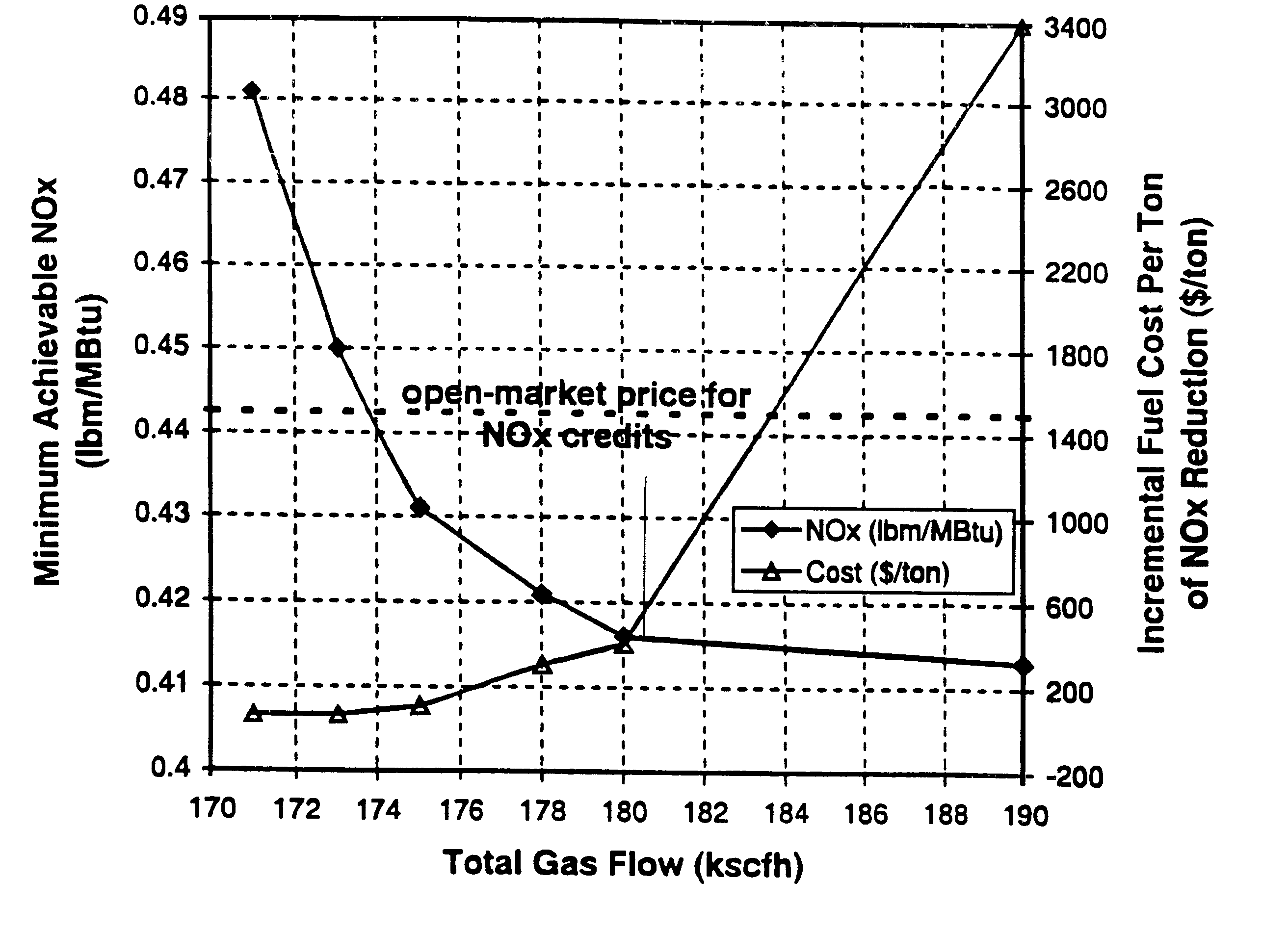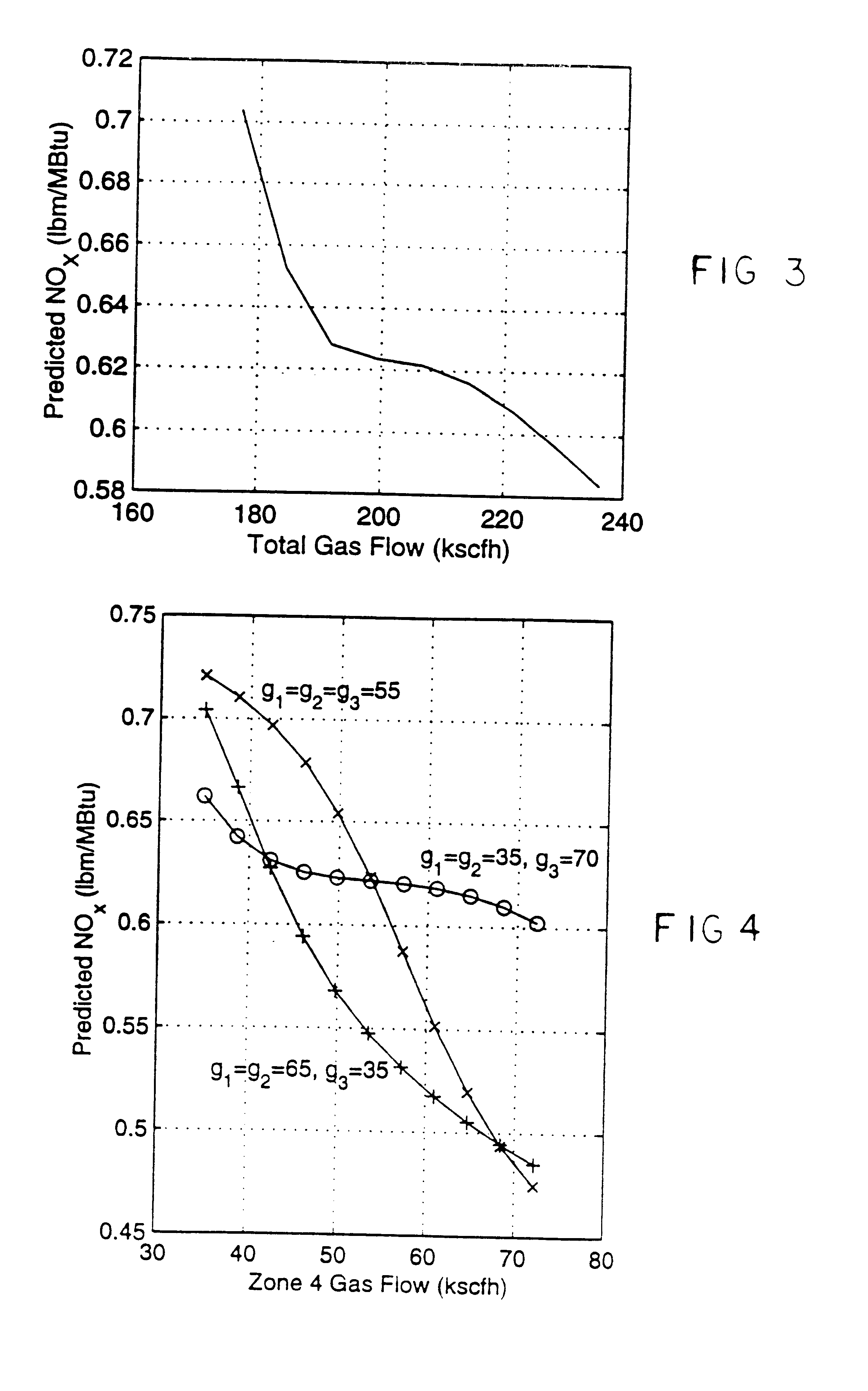Intelligent emissions controller for substance injection in the post-primary combustion zone of fossil-fired boilers
an emissions controller and intelligent technology, applied in adaptive control, lighting and heating apparatus, instruments, etc., can solve the problems of complex optimization and control of the flgr system, the conventional gas reburning technology or other technologies involving the injection of natural gas and/or other substances, and the implementation of expensive physical boiler modifications. to achieve the effect of reducing one emission
- Summary
- Abstract
- Description
- Claims
- Application Information
AI Technical Summary
Benefits of technology
Problems solved by technology
Method used
Image
Examples
Embodiment Construction
Plant data from demonstration tests conducted at the Commonwealth Edison Joliet Station 9 Unit 6 (JSU-6) coal-fired electric power plant in Joliet, Illinois during the summer of 1997 were used in developing this invention. JSU-6 is a 320 MWe cyclone design boiler that is fueled with low-sulfur Western Powder River Basin subbituminous coal. The boiler consists of a single furnace divided into superheat and reheat regions. The unit is fired with nine horizontal cyclones; four cyclones are located along the north wall of the furnace and five are located along the south wall. The boiler is capable of delivering a maximum of 2.2 million pounds of steam per hour at 2000 psi, 1015.degree. F. on the superheat side, and 1005.degree. F. on the reheat side.
The FLGR system installed at JSU-6 consists of a total of 36 natural gas injectors divided equally between the north wall of the reheat side of the furnace and the south wall of the superheat side of the furnace. The four zones of the furnac...
PUM
| Property | Measurement | Unit |
|---|---|---|
| temperatures | aaaaa | aaaaa |
| gas pressure | aaaaa | aaaaa |
| time | aaaaa | aaaaa |
Abstract
Description
Claims
Application Information
 Login to View More
Login to View More - R&D
- Intellectual Property
- Life Sciences
- Materials
- Tech Scout
- Unparalleled Data Quality
- Higher Quality Content
- 60% Fewer Hallucinations
Browse by: Latest US Patents, China's latest patents, Technical Efficacy Thesaurus, Application Domain, Technology Topic, Popular Technical Reports.
© 2025 PatSnap. All rights reserved.Legal|Privacy policy|Modern Slavery Act Transparency Statement|Sitemap|About US| Contact US: help@patsnap.com



